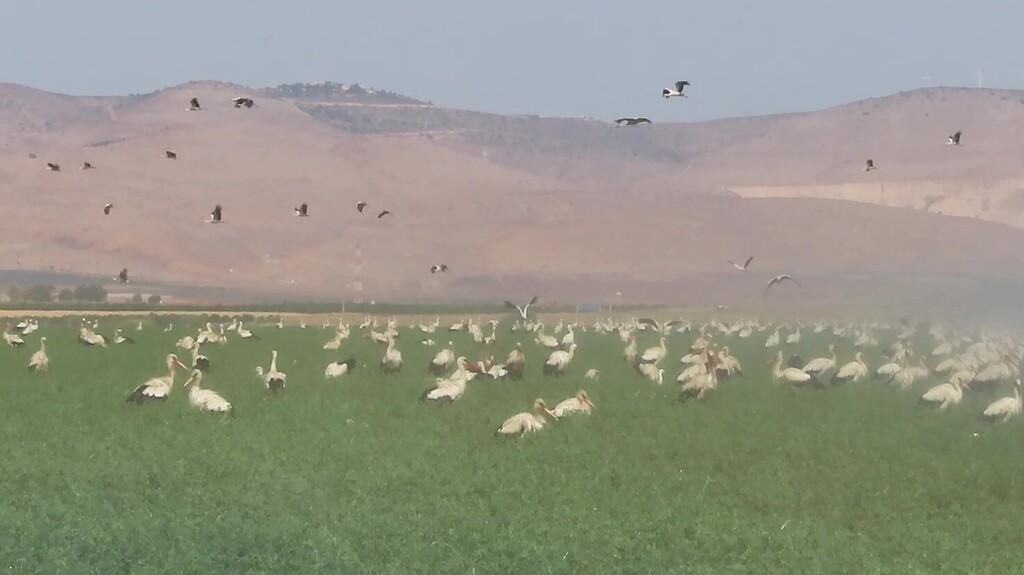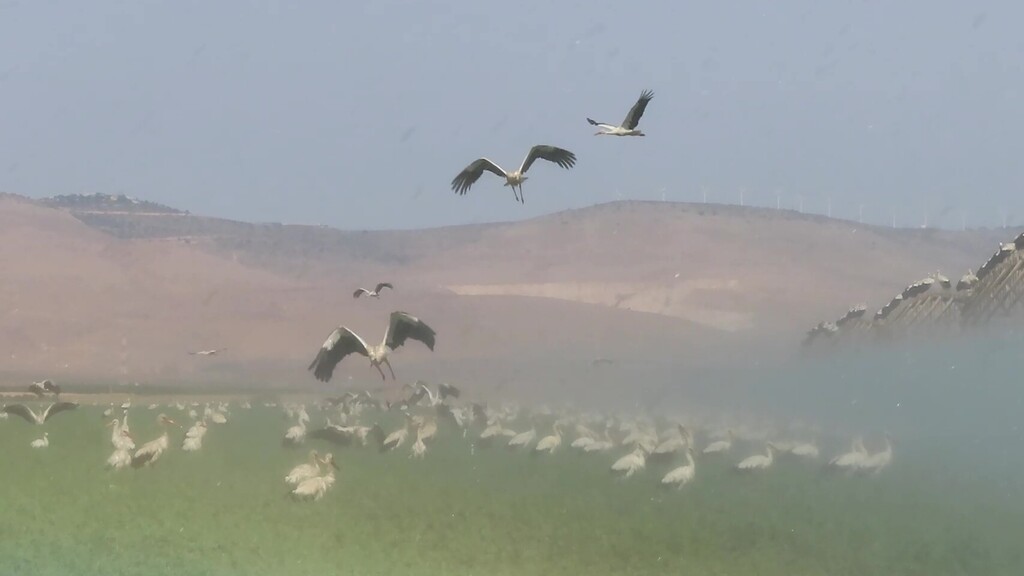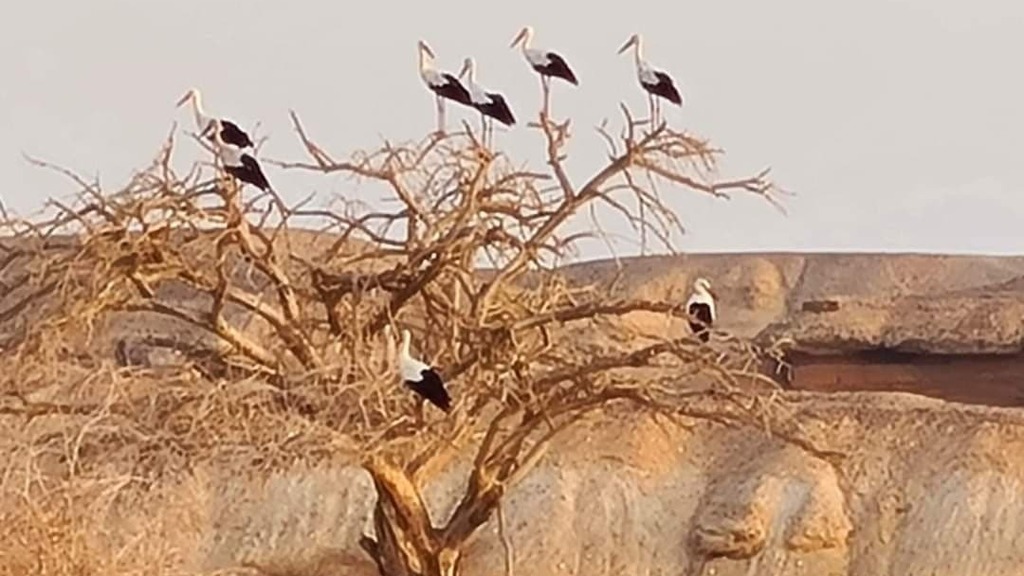Getting your Trinity Audio player ready...
Hundreds of white storks were seen this week as they enjoyed the water and sustenance in the fields of Emek HaMa'ayanot (The Valley of Springs) in northern Israel, before continuing on their way south for the winter.
As many as 100,000 passed over Israel in recent days and around 500,000 more are expected in the coming week, as they make their way from northern Europe, all the way to the shores of Africa.
3 View gallery


White storks enjoy food and water as the rest in the fields of northern Israel before continuing south for the winter
(Photo: Society for the Protection of Nature)
Emek HaMa'ayanot is one of the best vantage points for keen birdwatchers, as the storks favor the lucerne fields in the area. Despite the extreme heat, irrigation of the fields provides them with water.
As the sun begins to heat the fields - at around 8-9 am, the storks take advantage of the warm air current and fly on.
3 View gallery


White storks take advantage of the warm air currents to fly on their way south
(Photo: Society for the Protection of Nature)
They can then be seen along the eastern part of the county in several resting areas from north to south.
Dr. Yoav Perlman, the scientific director of Birds' Life – part of the Society for the Protection of Nature - says the storks are big, with long necks and long legs. They are approximately 1 meter (3 feet) high, with a wingspan of 1.80 meters (6 feet) and weigh up to 4.5 kilograms. (10 lbs.)
There are white and black storks that are commonly seen in Israel during the migration seasons. The rarer pink storks are more often seen in Africa.
Only a small number of storks remain here for the winter nesting mostly in the Golan Heights.
3 View gallery


White storks rest on a tree in the Arava Desert as they make their way south to Africa
(Photo: Central Arava Regional Council)
Feldman says the white storks are plentiful and classified as of Least Concern, with a world population estimated to be around 700,000, found mostly in Europe.
The black stork though does not fare as well and is estimated to have a population of 24,000 to 44,000 worldwide. These birds rely on ancient forests as their habitat and are therefore more vulnerable.

